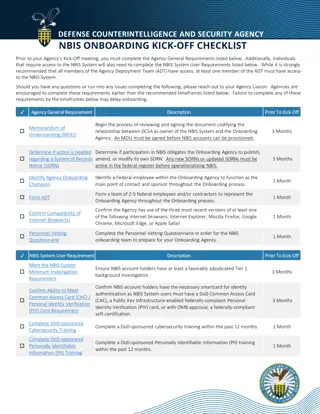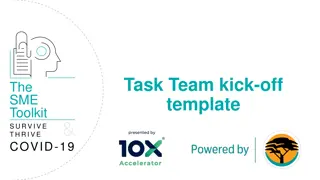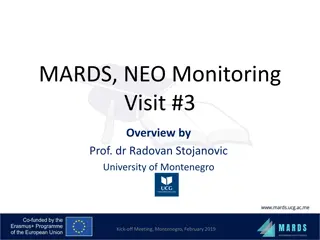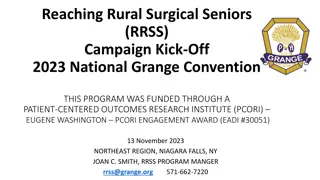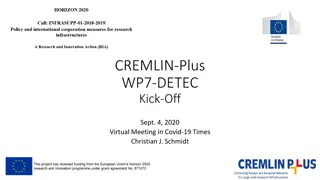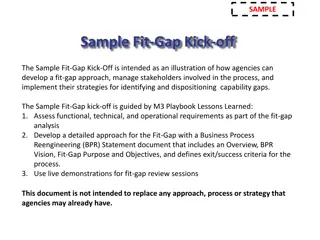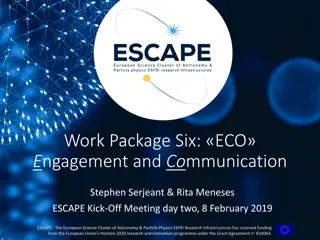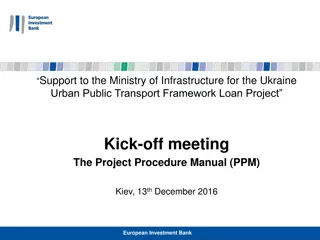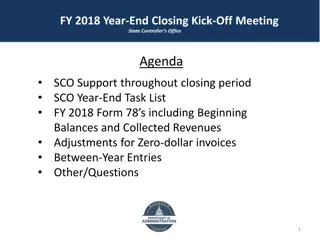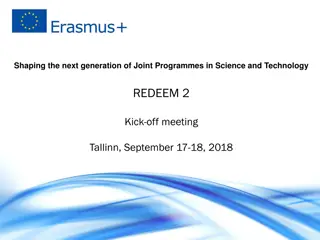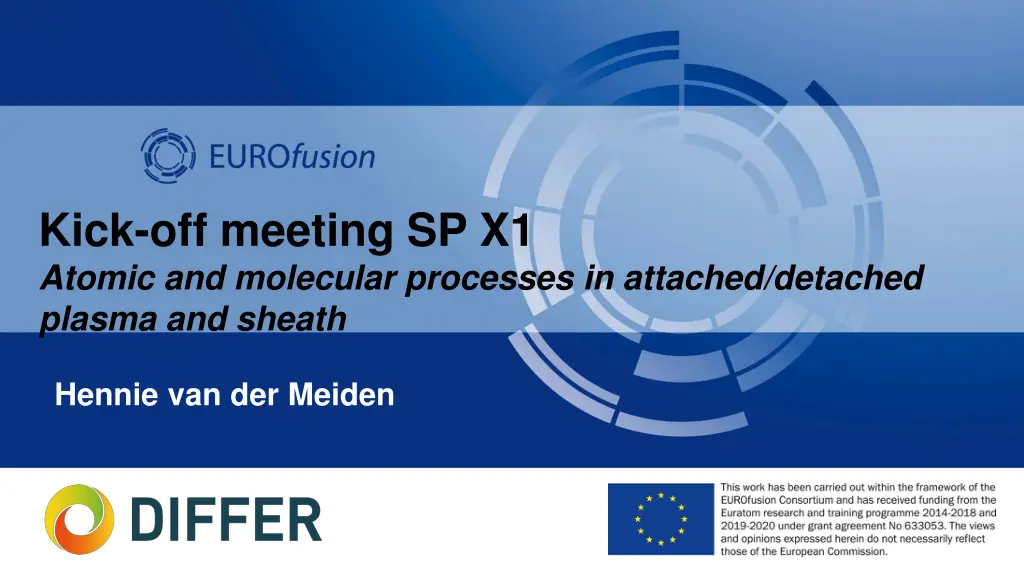
Atomic and Molecular Processes in Plasma and Sheath Effects
Explore atomic and molecular processes in attached/detached plasmas with a focus on the distribution of ro-vibrationally excited states of hydrogen and its isotopes. The kick-off meeting addresses the status, synchronization of work, and possible delays in achieving the ultimate goal of determining these states. Tasks and deliverables for 2021 are outlined, including the installation of TALIF and the design of CARS/SARS systems for ground state distribution measurement. Motivation stems from the need to understand reaction rates, particularly in the context of plasma power flux and momentum mitigation. Dive into the world of atomic densities and distribution complexities to uncover insights crucial for various applications.
Download Presentation

Please find below an Image/Link to download the presentation.
The content on the website is provided AS IS for your information and personal use only. It may not be sold, licensed, or shared on other websites without obtaining consent from the author. If you encounter any issues during the download, it is possible that the publisher has removed the file from their server.
You are allowed to download the files provided on this website for personal or commercial use, subject to the condition that they are used lawfully. All files are the property of their respective owners.
The content on the website is provided AS IS for your information and personal use only. It may not be sold, licensed, or shared on other websites without obtaining consent from the author.
E N D
Presentation Transcript
Kick-off meeting SP X1 Atomic and molecular processes in attached/detached plasma and sheath Hennie van der Meiden
SP X.1: Anouncements The Dutch proposals on VUV LIF were not granted (Dutch granting organization NWO). We will continue without and will first concentrate on TALIF and as step 2 on CARS and SARS to probe the complete ro-vibrational ground state distribution of H2 and isotopes. Due to liquid helium delivery problems, required for the SC magnet, Magnum-PSI will start operation in July/August H2(v,r) ground state population (TU/e)
SP X.1: Atomic and molecular processes in attached/detached plasmas and sheath effects Ultimate goal: Deyermination of distribution of ro-vibrationally excited states of H2 and its isotopes H2(v,r) ground state population (TU/e) Main goal of this meeting: Status and if required synchronization of the work to be done Identify possible issues that can cause delays
SP X.1: Detailed describtion tasks and deliverables 2021 Measurement of the atomic density of H(1s) and isotopes: installation TALIF in MAGNUM-PSI. Final design CARS/SARS system for ro-vibrational ground state distribution H2 in MAGNUM (DIFFER) VUV passive spectroscopy on H/H2 and isotopes in MAGNUM-PSI and PSI-2 (FZJ, DIFFER, CU) Final design LIF in PSI-2 to measure H2 ro-vibrational ground state distribution (FZJ) Feasibility study multi-photon LIF to measure ro-vib. ground state distri. of H2 and isotopes (DCU) Measure ion/electron properties in the proximity of the target surface (Magnum (ion/electron), UPP (electron)) for accurate power load estimations (DIFFER) D1: TALIF system installed at MAGNUM-PSI and conceptional design CARS/SARS system for ro-vib. ground state distribution H2 in MAGNUM-PSI ready (DIFFER) D2: VUV OES results H/H2 (DIFFER, FZJ, CU) D3: Conceptional design LIF for H/H2measurements in PSI-2 ready (FZJ) D4: Results feasibility study multi-photon LIF for ro-vib. ground state distribution H2(v,J) (DCU) D5: vplasmameasurements (CTS) near the surface as function of ne(input SP D), and ne/Te measurements in UPP (DIFFER)
SP X.1: Atomic and molecular processes in attached/detached plasmas and sheath effects Motivation Measurement of ro-vibrational distribution and of atomic densities of ground state hydrogen and isotopes. Why?....a few examples MAR is beneficial for mitigation of plasma power flux/momentum in SOL, but understanding of formation is required. distribution not known Reaction rates vary orders of magnitude with ro-vib. Ro-vib H2(v,r) + H+ v=4~1.8eV 13.6 eV H2+ + H(1s) v=0~15.4eV 0 eV ~13.6 eV Reaction rates H and isotopes can differ a lot! Input required for SOL modeling!

